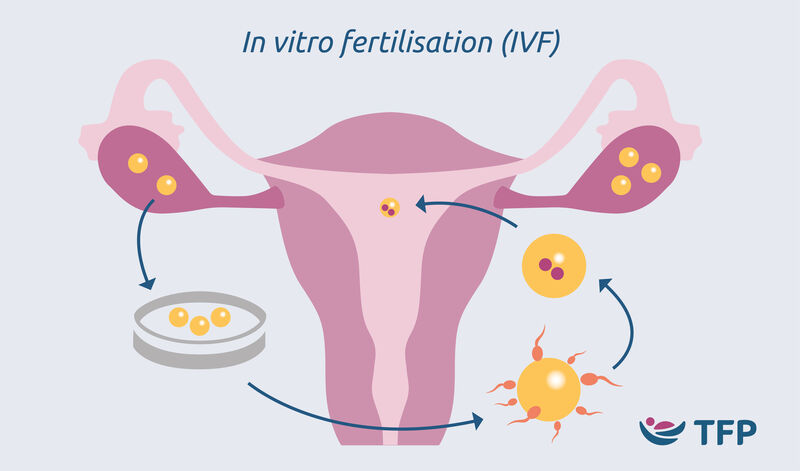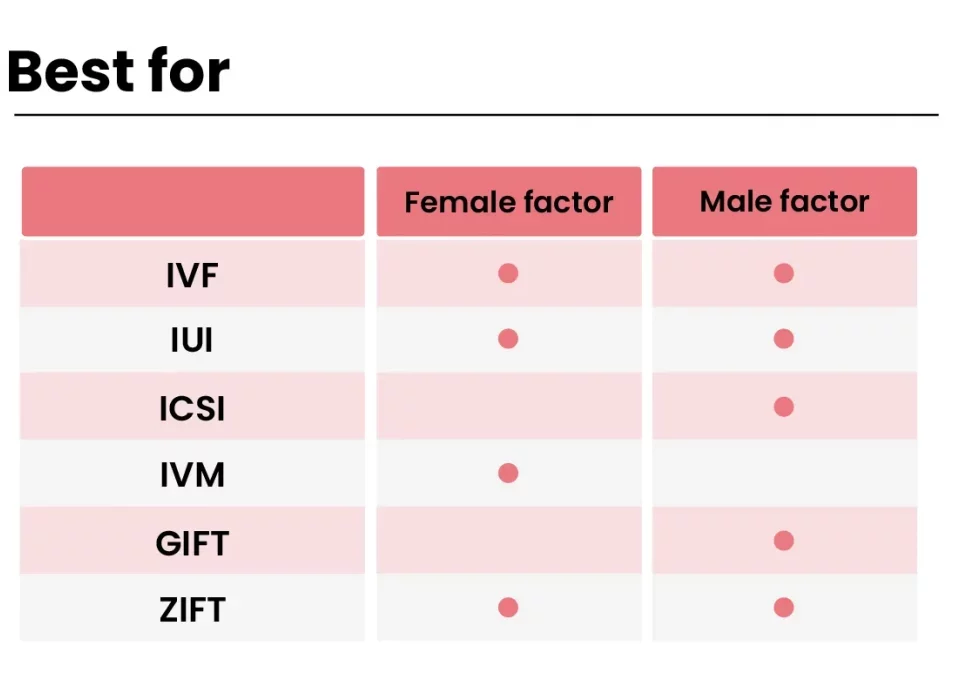
Does TRICARE Cover IVF? Your Complete Guide to Fertility Benefits for Military Families
April 3, 2025
Can You Pick Gender with IVF? Everything You Need to Know
April 3, 2025How Much Does IVF Cost? Your Complete Guide to Understanding In Vitro Fertilization Expenses

How Much Does IVF Cost? Your Complete Guide to Understanding In Vitro Fertilization Expenses
Starting a family can feel like a dream come true, but for some, the journey isn’t as simple as they’d hoped. If you’re exploring in vitro fertilization (IVF) to grow your family, you’ve probably wondered: How much is this going to cost me? It’s a big question—and one that deserves a clear, honest answer. IVF can be a life-changing option, but the price tag often feels like a mystery wrapped in a maze. Don’t worry, though—I’m here to break it all down for you, step by step, with the latest info, real-world insights, and some practical tips to help you plan.
IVF costs can vary wildly depending on where you live, what your insurance covers (if anything), and the specific treatments you need. In this guide, we’ll dig into the numbers, uncover hidden expenses, and explore ways to make it more affordable. Plus, I’ll share some fresh perspectives—like how new research and trends are shaping the future of IVF costs—that you won’t find in every article out there. Let’s dive in and get you the answers you’re looking for.
What Is IVF, Anyway?
Before we talk dollars and cents, let’s make sure we’re on the same page about what IVF actually is. In vitro fertilization is a fertility treatment where doctors take eggs from the ovaries, fertilize them with sperm in a lab, and then place the resulting embryo back into the uterus. It’s like giving nature a little high-tech nudge. People turn to IVF for all kinds of reasons—maybe they’ve been trying to conceive for a while without luck, or they’re facing challenges like blocked tubes, low sperm count, or even wanting to freeze their options for later.
The process isn’t quick. A single IVF cycle usually takes about 3 to 6 weeks, and it involves a mix of doctor visits, medications, and lab work. Each step adds to the cost, which is why understanding the full picture matters so much. Ready to see what’s behind the price tag? Let’s break it into pieces.
The Big Picture: How Much Does IVF Cost on Average?
Here’s the number most people want to know right off the bat: in the United States, one IVF cycle typically costs between $12,000 and $25,000. That’s a wide range, right? The average lands around $21,600 per cycle, according to recent estimates from fertility experts and clinics. But here’s the catch—most people don’t get pregnant on their first try. Studies show the average patient goes through two to three cycles, which could mean spending closer to $50,000 total before welcoming a baby.
Outside the U.S., prices can look very different. In places like the UK or Canada, where healthcare systems sometimes cover part of the cost, a cycle might drop to $5,000–$10,000. Meanwhile, in countries with less regulation or lower labor costs, like India or Mexico, you might pay as little as $3,000–$6,000. So, geography plays a huge role.
But those are just the base numbers. The real cost depends on a bunch of factors—think medications, extra procedures, and even where you’re getting treatment. Let’s unpack those next.
Breaking Down the Costs: What’s Included in an IVF Cycle?
When you see that $12,000–$25,000 price tag, it’s not just one big bill. It’s a bundle of smaller expenses that add up. Here’s what you’re usually paying for in a standard IVF cycle:
- Monitoring Appointments: Before anything happens, doctors need to check your hormone levels and track how your ovaries are responding. This can cost $500–$1,500, depending on how many visits you need.
- Egg Retrieval: This is the procedure where they collect eggs from your ovaries. It’s done under anesthesia, so you’re looking at $1,500–$3,000.
- Lab Fees: Fertilizing the eggs and growing embryos in a lab isn’t cheap—expect $3,000–$5,000 for this step.
- Embryo Transfer: Placing the embryo into the uterus is another $1,000–$3,000.
- Medications: Here’s where things can really climb. Fertility drugs to stimulate egg production can range from $3,000 to $7,000 per cycle, sometimes more if you need higher doses.
That’s the core package. But IVF isn’t one-size-fits-all, and extra steps can push the cost higher. Let’s look at some of those add-ons.
Add-Ons That Can Increase Your Bill
Sometimes, your doctor might recommend additional treatments to boost your chances. These aren’t always included in the base price, so they’re worth knowing about:
- ICSI (Intracytoplasmic Sperm Injection): If sperm quality is an issue, doctors might inject a single sperm directly into an egg. Add $1,000–$2,500.
- PGT (Preimplantation Genetic Testing): Want to screen embryos for genetic issues? That’s another $3,000–$6,000.
- Frozen Embryo Transfer: If you freeze embryos for later, transferring them costs $3,000–$5,000 per go.
- Donor Eggs or Sperm: Using donated materials can tack on $5,000–$15,000, depending on the source.
It’s like ordering a burger—start with the basic patty, but the toppings can double the price. The trick is figuring out what you need versus what’s optional. Talking to your doctor about your specific situation can help you avoid overpaying for extras that might not make a difference.
Why Does IVF Cost So Much?
If you’re staring at these numbers thinking, “Wow, that’s a lot,” you’re not alone. So why is IVF so pricey? It’s not just about greed—there’s a lot going on behind the scenes.
First, the tech is advanced. IVF labs use specialized equipment to mimic the human body, keeping eggs and embryos alive outside the womb. That gear isn’t cheap to buy or maintain. Second, you’ve got highly trained people—doctors, embryologists, nurses—all working together. Their expertise comes with a paycheck. And third, those medications? They’re custom-made hormones, not off-the-shelf pills, so they cost a fortune to produce.
Location matters too. In big cities like New York or Los Angeles, where rent and salaries are sky-high, clinics charge more to cover their overhead. Compare that to a smaller town or a country with subsidized healthcare, and the gap makes sense.
Here’s a quick reality check: a 2023 study from the National Bureau of Economic Research found that IVF’s cost per successful delivery (meaning a live birth) averages $56,000 in the U.S. That’s because success rates hover around 30–40% per cycle for women under 35, dropping lower as age goes up. So, the price isn’t just for one shot—it’s for the odds you’re playing.
Does Insurance Cover IVF?
Now, the million-dollar question (or at least the $50,000 one): Will your insurance pick up the tab? In the U.S., it’s a mixed bag. Only 19 states have laws requiring some level of infertility coverage, and even then, IVF isn’t always included. If you’re lucky, your plan might cover part of the process—like monitoring or meds—but full coverage is rare.
For example, states like California and New York have been pushing for broader fertility benefits. In 2024, California passed a law mandating insurance companies to cover IVF for certain groups, though it’s still rolling out. On the flip side, if you live in a state without these mandates, you’re likely paying out of pocket unless your employer offers a special plan.
Globally, it’s a different story. Countries like Sweden or Australia often subsidize IVF through public health systems, cutting costs for patients. In the U.S., though, the average uninsured couple foots the whole bill. Want to know where you stand? Check your insurance policy or call your provider—look for terms like “infertility treatment” or “assisted reproduction.”
Quick Poll: What’s Your Insurance Situation?
How does your insurance handle IVF? Take a second to vote—it’ll help us see what’s common out there!
- ✔️ Full coverage—lucky me!
- ✔️ Partial coverage (e.g., meds or diagnostics)
- ❌ No coverage at all
- ✔️ I’m not sure yet
Drop your answer in the comments—I’ll tally them up later!
How to Make IVF More Affordable
Okay, so the costs are high, but that doesn’t mean you’re stuck. There are ways to bring the price down or spread it out. Here are some practical ideas based on what real people are doing:
1. Shop Around
Clinics don’t all charge the same. A 2024 survey by FertilityIQ found price differences of up to 30% between clinics in the same city. Call around, ask for itemized quotes, and don’t be shy about negotiating—some offer discounts if you pay upfront.
2. Look for Grants or Discounts
Nonprofits like the Baby Quest Foundation or CNY Fertility’s grant program give out thousands of dollars to help cover IVF. Eligibility varies (income, location, etc.), but it’s worth applying. Some clinics also have “shared risk” programs—pay a flat fee for multiple cycles, and get a refund if it doesn’t work.
3. Consider Financing
Many clinics partner with lenders to offer IVF loans. Rates vary, but you might snag 0% interest for the first year. Just watch out for high fees later—read the fine print. Apps like Future Family even let you bundle costs into monthly payments, starting around $300.
4. Travel for Treatment
Medical tourism is growing. Places like Spain or Mexico offer IVF for $5,000–$8,000, including top-notch care. Add travel costs, and it might still beat U.S. prices. Research clinics with good reviews and international accreditation (like JCI) before booking.
5. Cut Med Costs
Generic fertility drugs can save you hundreds—ask your doctor if they’re an option. Some pharmacies, like Mark Cuban’s Cost Plus Drugs, are starting to offer discounts on IVF meds too. Stock up if you can.
Real talk: a couple I know saved $10,000 by splitting their treatment—doing monitoring locally and flying to a cheaper clinic for retrieval. It’s not for everyone, but it worked for them. What could work for you?
Hidden Costs You Might Not Expect
Beyond the obvious, there are sneaky expenses that can catch you off guard. Here’s what to watch for:
- Travel and Time Off: If your clinic’s far, gas, flights, or hotels add up. Plus, taking time off work might mean lost wages.
- Emotional Support: Therapy or support groups (around $50–$150 per session) can help with the stress, but they’re rarely covered.
- Storage Fees: Freezing extra embryos or eggs costs $500–$1,000 a year.
- Failed Cycles: Each unsuccessful try means starting over, with all the costs that come with it.
A friend of mine didn’t budget for storage and got hit with a $600 bill after her first cycle. Plan ahead, and you’ll avoid those surprises.
New Trends Shaping IVF Costs in 2025
IVF isn’t static—new tech and policies are changing the game. Here’s what’s hot right now, based on the latest buzz and research:
Simplified Lab Systems
Scientists are testing “lab-on-a-chip” setups that could slash lab costs by up to 90%. A 2022 study in Fertility and Sterility showed these systems can grow embryos just as well as traditional setups, but they’re cheaper to run. Clinics adopting this could drop prices in the next few years—keep an eye out.
Mild Stimulation Protocols
Instead of pumping you full of pricey drugs, some doctors are using gentler doses. Research from the International Society for Mild Approaches in Assisted Reproduction says this cuts med costs by 30–50% without tanking success rates. It’s not for everyone, but it’s gaining traction.
Policy Push
In early 2025, the White House issued an executive order to expand IVF access, citing costs of $12,000–$25,000 per cycle. If federal subsidies kick in, we might see prices dip—or at least more insurance plans covering it. X posts lately show people are hopeful but skeptical it’ll happen fast.
These shifts could save you thousands down the line. Want to stay ahead? Follow fertility news or ask your clinic about cutting-edge options.
IVF Success Rates and Cost Per Baby
Spending money is one thing—getting a baby is another. Success rates tie directly to cost because they tell you how many cycles you might need. Here’s the deal, per the CDC’s 2021 data:
- Under 35: 40–50% success per cycle
- 35–37: 30–40%
- 38–40: 20–30%
- Over 40: 10–15%
Older age means more cycles, which means more cash. A 2023 analysis pegged the cost per live birth at $50,000–$60,000 for younger women, ballooning to $160,000 or more if you’re over 40 with male-factor infertility. It’s a gamble, but knowing the odds helps you budget.
Mini Quiz: What’s Your IVF Budget?
Let’s make this fun—answer these quick questions to ballpark your costs:
- How old are you? (Younger = fewer cycles, usually)
- Any known fertility issues? (More issues = more add-ons)
- Got insurance coverage? (Yes = big savings)
- Willing to travel? (Could cut costs)
Jot down your answers and think: Am I looking at $20,000 or $60,000? Share your guess below—I’d love to hear!
Real Stories: What IVF Costs Look Like in Action
Numbers are great, but stories hit home. Here are two examples from people I’ve talked to (names changed for privacy):
Sarah, 32, Chicago
- Cost: $18,000 for one cycle
- Details: Insurance covered monitoring, but she paid for meds ($4,000) and retrieval out of pocket. Got pregnant on the first try.
- Tip: “Ask about package deals—my clinic knocked off $1,000 when I paid upfront.”
Mike and Jen, 39, Texas
- Cost: $45,000 over two cycles
- Details: No insurance, used ICSI and PGT, traveled to a cheaper clinic 3 hours away. Second cycle worked.
- Tip: “Budget for the extras—we didn’t expect the hotel bills.”
Their takeaway? Flexibility and research paid off. What’s your plan shaping up to be?
Global IVF Costs: A Quick Comparison
Wondering how the U.S. stacks up? Here’s a snapshot of average IVF costs worldwide, adjusted to 2025 estimates:
| Country | Cost Per Cycle | Notes |
|---|---|---|
| USA | $12,000–$25,000 | No national coverage |
| UK | $5,000–$8,000 | Partial NHS funding in some areas |
| Canada | $7,000–$12,000 | Varies by province |
| Australia | $6,000–$10,000 | Subsidized by Medicare |
| India | $3,000–$6,000 | Popular for medical tourism |
| Spain | $5,000–$8,000 | High success rates, affordable |
Tempted to pack your bags? Weigh travel costs against savings—it’s a personal call.
Unique Insight: The Emotional Cost of IVF Funding
Here’s something you won’t find everywhere: the emotional toll of chasing IVF cash. A 2024 study from Stanford found that couples with lower incomes are twice as likely to drop out of treatment when insurance stops covering it. It’s not just about money—it’s stress, guilt, and feeling like you’re racing a clock.
I talked to a mom who sold her car to fund a cycle. “It was worth it,” she said, “but I cried every time I walked past the empty garage.” Money’s one hurdle; the mental load is another. Build a support network—friends, a counselor, even online forums. It won’t lower the bill, but it’ll lighten the load.
Step-by-Step: Planning Your IVF Budget
Ready to take control? Here’s a simple guide to map out your costs:
- Assess Your Baseline: Call your clinic for a quote. Ask what’s included—don’t assume.
- Check Insurance: Dig into your policy or call HR. Even partial coverage helps.
- List Extras: Factor in meds, travel, and time off. Add 10% for surprises.
- Explore Savings: Research grants, loans, or cheaper clinics. Set a deadline to apply.
- Set a Limit: Decide your max spend—say, $30,000—and stick to it.
Example: If your clinic quotes $15,000, meds are $5,000, and you need two cycles, you’re at $40,000. Adjust from there. Write it down—it’s less scary on paper.
IVF Costs Over Time: Are They Going Up or Down?
Good news: some experts think IVF costs might stabilize. A 2025 report from Grand View Research predicts the global IVF market will hit $51 billion by 2032, driven by demand and tech improvements. More competition could mean lower prices—think $10,000 cycles in the U.S. by 2030 if labs get cheaper.
But there’s a flip side. Drug prices keep rising, and fancy add-ons like AI embryo selection (yep, it’s a thing) could keep costs high for premium clinics. My take? Basic IVF might get more affordable, but the deluxe version won’t.
Your IVF Action Plan: Next Steps
You’ve got the facts—now what? Here’s how to move forward:
- Talk to a Doctor: Book a consult to nail down your needs and get a personalized quote.
- Crunch the Numbers: Use my steps above to draft a budget. Be realistic.
- Build a Cushion: Save an extra $2,000–$5,000 for unexpected hiccups.
- Stay Informed: Follow fertility blogs or X discussions (search “IVF costs 2025”) for updates.
One last tip: don’t let the price scare you off. A baby’s priceless, right? But knowing what you’re in for makes it less overwhelming. You’ve got this.
Final Checklist: Are You Ready?
Before you jump in, run through this:
- ✔️ Clinic picked and quoted
- ✔️ Insurance clarified
- ✔️ Savings or financing in place
- ✔️ Support system ready
- ❌ Still clueless? Reread this guide!
What’s your next move? Drop it in the comments—I’m rooting for you!

